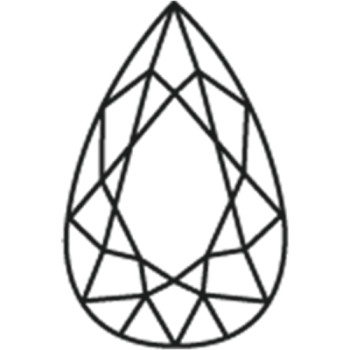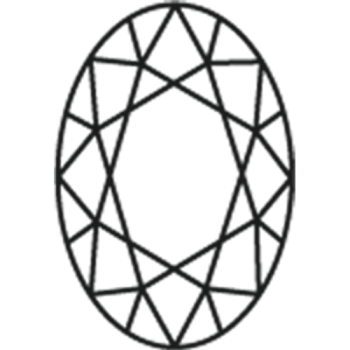4 C’S OF DIAMOND - THE BUYER’S GUIDE
Every diamond is different from the other and this very factor adds to its value. Just a few years ago, there were no standard proceduresto judge or evaluate the diamonds. The Gemological Institute of America (GIA) created the first grading system and it’s still the most relied upon standardfor assessing the diamond’s quality. The 4C’s of a diamond refer to the universally accepted method for the quality assessment of any diamond. The 4 C’s ensure thatthe diamond quality can be communicated universally and the customers know if their purchase is worth it. Let’s read about the 4C’s of the diamonds(i.e. cut, clarity, color, and carat) in detail
Diamonds get their amazing sparkle from their ability to transmit light. A diamond’s cut is generally perceived as something related to shape, like oval shaped or pear shaped diamonds. However, it actually depends on how well it can interact with light. A high level of precision is required in the artistry and workmanship to design a stone whose proportions, polish and symmetry transmit the light as required. Achieving the finest cut in the diamond is a precondition for the gem’s ultimate beauty and value. Of all the C’s of a diamond, this one is the most difficult and complex. The main purpose is to observe how well the diamond transmits the light wavelengths to create the desired visual effects like the reflection of white light from the stone, its scattering into the rainbow colors, and scintillation (amount of sparkle and patterns of light and dark areas created by reflection inside the stone). The GIA scales the diamond cut on four categories: excellent, good, very good, fair, and poor. The cut having an even pattern of bright and dark areas is rated as excellent.
The highest quality diamond is completely colorless. This is because a structurally perfect and chemically pure diamond has no shade, just like pure water. This diamond has a higher value. GIA grades the color on a D-to-Z scale. It compares the stone under controlled lighting and viewing conditions meeting precision to the master stones of standardized color value. Many of the diamond color distinctions are not even visible to an untrained eye. Hence, you need to get a professional’s opinion (a certificate would be enough) to assess the quality of stone in terms of its color. Remember that the stone’s color makes a big difference in its value. The GIA’s D-to-Z scale assesses the stone on the basis of colorless, near colorless, faint, very light, and light categories. The stone falling under the category ‘light’ has a visible yellowish tinge and it’s cheaper in value. Not all colored diamonds are cheaper though. Blue or red diamonds, for example, are extremely rare and extremely expensive.
Diamond clarity represents the absence of blemishes and inclusions in the stone. These gems are formed as a result of carbon crystallization under immense heat and pressure deep inside the earth. This entire process causes the occurrence of certain internal imperfections (formation of small crystals inside the diamond) called inclusions. Blemishes are the causes of the imperfections during the cutting and polishing of the diamond. Both these occurrences affect the clarity and ultimately the quality of the gem. Assessing the clarity of diamond involves identifying the size, number, nature, relief, and position of these internal and external characteristics. It also takes into account the effect of these imperfections on the stone’s overall experience. Notably, no diamond is completely pure, but the closer it is to being pure, the higher it will be in value and quality. The GIA scale includes FL (flawless), IF (Internally flawless), VVS1 (Very, Very Slightly Included), VVS2 (Very, Very Slightly Included), VS1 (Very Slightly Included), VS2 (Very Slightly Included), SI1 (Slightly Included), SI2 (Slightly Included), I1 (Included), I2 (Included), and I3 (Included). The FL is the top grade and means no inclusions and blemishes are visible to a skilled grader while using 10x magnification. I3 grade means that inclusions are not only obvious but also can affect the transparency and brilliance of the stone.
Carat represents the diamond’s weight. A metric carat is equal to 200 milligrams. It is divided into 100 points, which ensures precise measurements, even to the 100th decimal place. The jewelers use the points to describe a stone weighing below one carat. A jeweler might tell you a diamond is 25-pointer, which actually weighs 0.25 carats. Diamonds that weigh over one carat are represented in carats and decimals. The gem’s price increases with its carat weight. Larger diamonds are rare and high in-demand. That does not mean that diamonds weighing the same would have similar prices, as the other three factors also determine the stone’s cost. What happened earlier was that the gem traders would use small, uniform seeds to measure the weight of diamonds. The idea of introducing a weighing system universal across the world came from that. The difference in carat weight can lead to a significant price difference. Even though a 0.09-carat diamond is not very different from a one-carat diamond, there is going to be a prominent difference in price.

Also called the 5th C of diamond, certification is very important for an authentic diamond purchase. A diamond certification includes all the details and intricacies about the 4C’s of diamond. Even if you understand the diamond’s properties completely, you would not be able to assess the gem’s quality yourself. Only a professional gemologist can tell you whether the quality of a diamond is compatible with its price. The certificate can serve the same purpose. So, always acquire the jewelry that has certification from authentic labs like GIA.



















